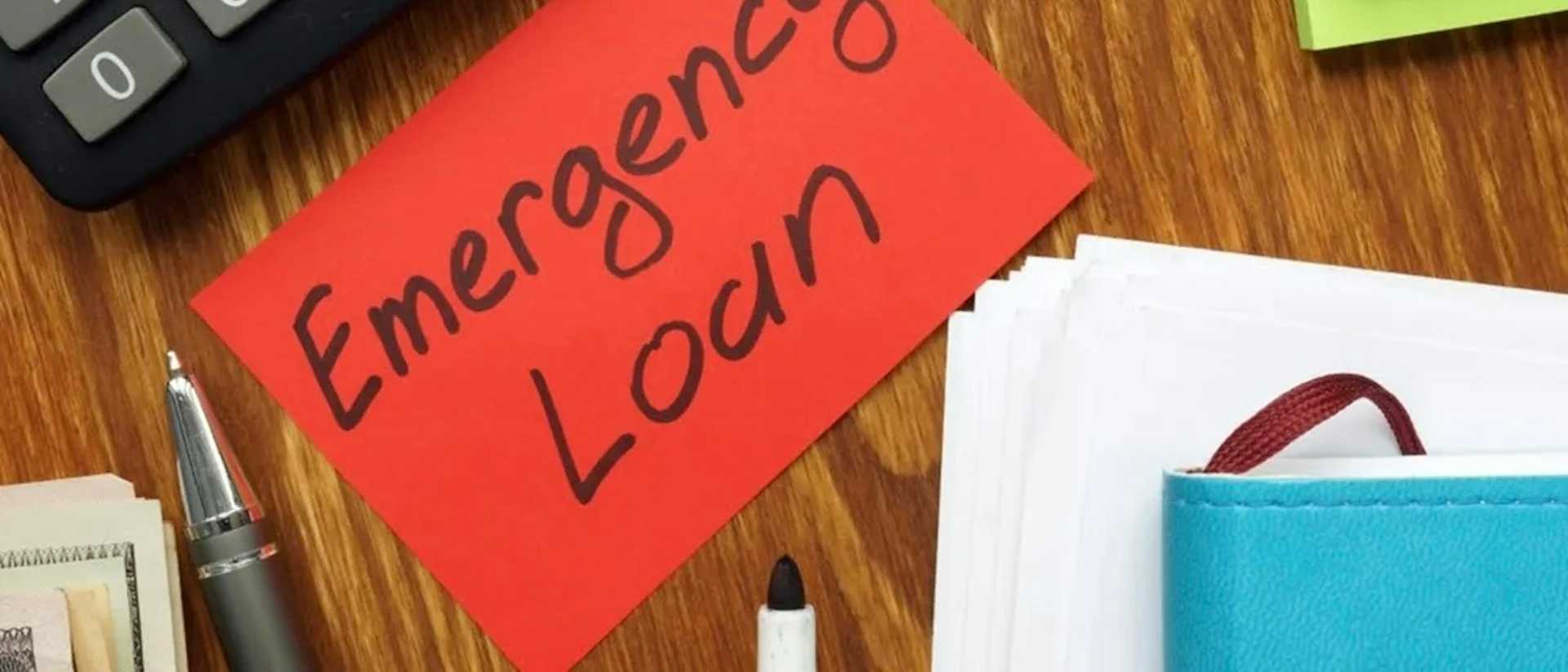A Guide to Emergency Loans: How They Work and Who They're For

Introduction
Life is known for its unpredictability, and when unexpected financial hurdles arise, having a safety net becomes crucial. This is where emergency loans step in as a lifeline, offering much-needed relief in times of uncertainty. As a credit finance professional with a deep understanding of the Australian financial landscape, I am keenly aware of the role emergency loans play in providing individuals with the means to weather sudden storms.
In this comprehensive guide, we'll delve into the world of emergency loans, uncovering their nuances and shedding light on how they can be a valuable resource during challenging times. From defining emergency loans and differentiating them from regular personal loans to understanding the various purposes they serve, we'll explore every facet of this financial tool.
Understanding Emergency Loans

Emergency loans serve as financial lifelines in times of unexpected crises. These loans are designed to provide quick access to funds for urgent needs, such as medical expenses, car repairs, or sudden job loss.
Key Players in Emergency Lending
In Australia, several institutions offer emergency loans, each with its own application process, eligibility criteria, and terms. These include traditional banks, credit unions, online lenders, and even fintech platforms. It's crucial to research and compare options to find the one that best suits your needs and financial situation.
Distinguishing Emergency Loans from Regular Personal Loans
While emergency loans and regular personal loans may seem similar, they have distinct differences. Emergency loans are designed to be processed quickly, with a focus on rapid approval and disbursement. They are often unsecured loans, meaning you don't need to provide collateral. Regular personal loans, on the other hand, may have a longer application process and require more documentation. Understanding these differences helps you choose the right option for your situation.
Determining the Purpose of Emergency Loans

Life is full of surprises, and not all of them are pleasant. Emergency loans can be a financial safety net when unforeseen expenses arise, such as medical bills, home repairs, or urgent travel. By securing an emergency loan, you can navigate these challenges without sacrificing your financial stability.
In this section, we'll delve into the diverse purposes that emergency loans serve. From safeguarding your credit score to seizing new opportunities, we'll explore how these loans can provide not only immediate relief but also the means to navigate challenges and pursue growth.
Preserving Your Credit Score
Late payments and defaults can negatively impact your credit score. Emergency loans can help you avoid these issues by providing funds to cover immediate expenses, preventing missed payments that might otherwise harm your creditworthiness.
Navigating Job Loss
Losing a job is a stressful experience that can disrupt your financial stability. Emergency loans can help bridge the gap between jobs, covering essential expenses until you secure a new position. This safety net can alleviate some of the stress associated with unemployment.
Seizing Opportunities
Emergency loans aren't only for dire situations; they can also be used to seize promising opportunities. Whether you're pursuing further education, investing in your career development, or starting a small business, these loans can provide the initial capital needed to embark on these ventures.
Simplifying Access to Emergency Loans

In times of urgency, swift access to financial assistance can make all the difference. This section is your guide to unraveling the complexities of emergency loans. From understanding different loan types to exploring convenient avenues like online lenders and credit unions, we're here to simplify the process for you.
Understanding Secured vs. Unsecured Loans
Emergency loans can be secured or unsecured. Secured loans require collateral, such as a vehicle or property, which can make them easier to qualify for but carry the risk of losing the collateral if you default. Unsecured loans don't require collateral, but they may have stricter eligibility requirements.
Exploring Payday Loans
Payday loans are short-term loans designed to cover immediate expenses until your next paycheck. While they are convenient, they often come with high-interest rates and fees. If considering a payday loan, it's essential to understand the terms and evaluate whether it's the best option for your situation.
Leveraging Online Lenders and Fintech Solutions
Online lenders and fintech platforms have streamlined the loan application process, offering faster approvals and convenient digital interfaces. These options can be especially useful when you need funds urgently.
Utilising Credit Union Options
If you're a member of a credit union, you may have access to emergency loans with favourable terms. Credit unions prioritise their members' financial well-being and may offer lower interest rates and more flexible repayment options.
Emergency Lending Unveiled

When unexpected financial challenges arise, having a clear understanding of your options is essential. In this section, we'll peel back the layers of emergency lending, shedding light on interest rates, credit score dynamics, collateral considerations, and repayment strategies.
Understanding Interest Rates
Interest rates significantly impact the cost of borrowing. In emergency loans, interest rates can vary based on factors such as your credit score, loan amount, and the lender's policies. It's crucial to carefully review and compare interest rates to ensure you're getting a fair deal.
Credit Score Influence
Your credit score plays a crucial role in determining your eligibility for an emergency loan and the interest rate you'll receive. Maintaining a good credit score increases your chances of securing a loan with favorable terms.
Collateral Requirements
Secured emergency loans require collateral, which serves as a guarantee for the lender. While this can make approval easier, it's essential to consider the potential risk of losing your collateral if you're unable to repay the loan.
Crafting Repayment Terms
When obtaining an emergency loan, carefully review the repayment terms. Understand the monthly payments, the total repayment amount, and any penalties for early repayment. Developing a feasible repayment plan is essential to avoid falling into a cycle of debt.

Obtaining financial assistance should be straightforward, especially during urgent times. This section is designed to guide you through the process of applying for emergency loans. From gathering necessary documents to honing your credit profile, we'll provide practical tips to help you navigate the application journey seamlessly.
Organising Documentation
The application process for an emergency loan involves providing necessary documentation, such as proof of income, identification, and address verification. Having these documents organised and ready can expedite the approval process.
Honing Your Credit Profile
Before applying for an emergency loan, take steps to improve your credit profile. This might include paying down existing debts, ensuring timely payments, and correcting any errors on your credit report.
Exploring Alternatives
Emergency loans are just one option among many. Investigate government assistance programs, community resources, and even seeking help from family and friends. Exploring alternatives can provide additional avenues for financial support.
Seeking Professional Advice
Credit finance professionals can provide personalised guidance tailored to your financial situation. They can help you navigate the complexities of emergency loans, evaluate your options, and make informed decisions that align with your goals.
Responsible Borrowing in Emergency Scenarios

Even in times of urgency, wise decisions are crucial to secure your financial future. This section is dedicated to understanding the art of responsible borrowing during emergencies. From borrowing only what you truly need to planning for seamless repayments, we'll guide you through strategies that ensure your financial well-being remains intact.
Borrowing Only What You Need
While emergency loans can be tempting, it's crucial to borrow only the amount you need. Over-borrowing can lead to higher repayments and additional financial strain down the line.
Reading the Fine Print
Before signing any loan agreement, carefully read the terms and conditions. Understand the interest rate, fees, repayment schedule, and any penalties for late payments or early repayment.
Planning for Repayment
Develop a clear plan for repaying the emergency loan. Create a budget that accounts for the monthly payments and ensures you can comfortably meet your obligations. Prompt repayment helps maintain your financial health.
Monitoring Your Credit
Even after securing an emergency loan, continue to monitor your credit score and overall financial well-being. Responsible borrowing and repayment contribute to a positive credit history, which can benefit you in the long term.
Conclusion

Understanding the various aspects of emergency lending, from loan types to application processes, empowers you to make informed decisions that align with your unique circumstances. By borrowing responsibly and exploring alternatives, you can use emergency loans as a tool to navigate difficult times while maintaining a resilient financial outlook for the future.
Secure the financial support you need swiftly with Driva's emergency loans. Our platform lets you effortlessly compare offerings from over 30 lenders, all while enjoying the convenience of a 100% online application process. When emergencies strike, Driva has you covered.


.png)







